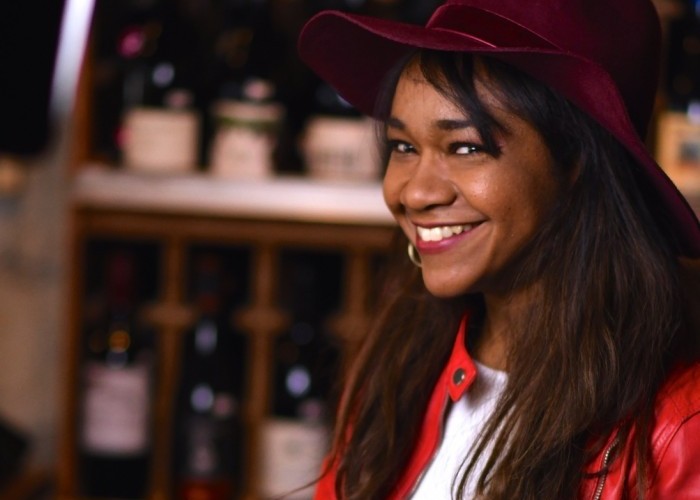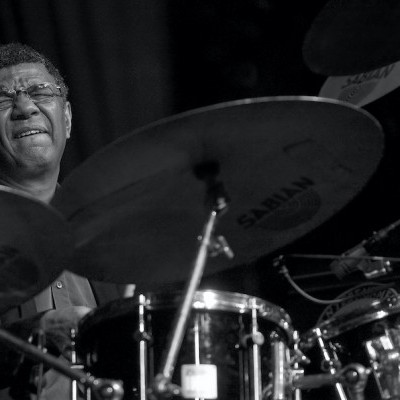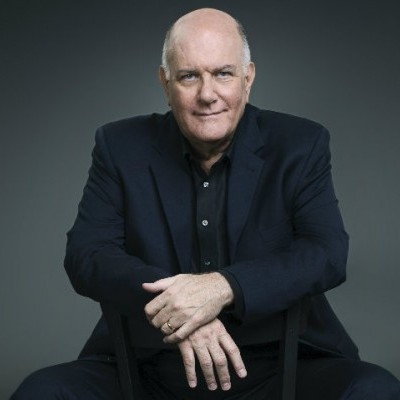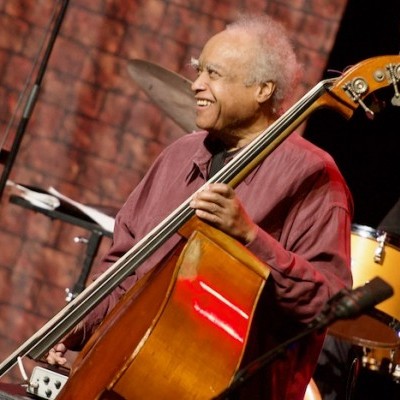Oct 28, 2025 10:47 AM
In Memoriam: Jack DeJohnette, 1942–2025
Jack DeJohnette, a bold and resourceful drummer and NEA Jazz Master who forged a unique vocabulary on the kit over his…

Magela Herrera perceives her work to be the result of a musical and cultural collision.
(Photo: Jose M. Alconchel)It’s surprising to hear Havana-born flutist, composer and vocalist Magela Herrera talk about inspiration drawn from Norway’s white landscapes, forests and fog. But she explains that living in the Nordic country amid six years of studies afforded her a different way of seeing music. And it allowed her to bring the best of all worlds together—classical, European, Afro-Cuban—on Explicaciones (Brontosaurus), her debut album.
Moving to Miami from Oslo two years ago, Herrera continued navigating a journey that began with a music-loving father and a highly musical extended family, including her uncle “El Guayabero,” a well-known traditional Cuban singer. Her childhood eventually led Herrera to dreams of joining an orchestra and a bachelor’s in classical music from the Instituto Superior de Arte in Havana in 2006. After completing her studies, though, Herrera left the classical world behind to join Mezcla, a renowned Havana fusion band.
Her tastes again shifted. After performing in 2009 at Norway’s Oslo Jazz Festival, and completing an additional bachelor’s, as well a master’s in jazz/improvised music performance from the Norwegian Academy of Music, Herrera found herself moving away from “traditional and conventional” jazz.
Her background, she said, made her an artist centered on melody and rhythm with a tendency toward complex chord changes, and as she puts it, “a lot of information.” Norway, Herrera said, taught her “a new way of seeing music.” She was enchanted by the idea of moving away from more traditional jazz and notation: “I was not used to that style of music—free improvisation is so different. I didn’t have to follow a strict pattern as to how music should sound or what music should be.”
As a result, Herrera left behind her charts, and went “deeper into style,” focusing her musical expression on other details: dynamics, texture, mood and, most of all, the idea of creating landscapes—describing images with sound.
As an example, she mentioned a cut from the new album, “Ahora,” for which she took inspiration from Norway’s natural landscape and beauty: the mountains, the smell of the air, the vibe of the city and people, and even Norwegian folk music. Her musical worlds, though, frequently are in collision mode. Other tracks on Explicaciones directly counter the Nordic vibe, including one composed for her father, “Danzón Para Papá,” a tune highlighting the centuries-old Cuban dance genre.
Now, Miami’s tropical grooves, steeped in funk, hip-hop, r&b, as well as jazz, are allowing Herrera to explore a new set of colliding worlds, and she describes “Two Sidewalks,” a vibrant track from the new album, as a juxtaposition of Norwegian jazz and Miami’s brightly hued rhythms.
“I don’t just want to be considered just a jazz flutist,” she said. DB

Jack DeJohnette boasted a musical resume that was as long as it was fearsome.
Oct 28, 2025 10:47 AM
Jack DeJohnette, a bold and resourceful drummer and NEA Jazz Master who forged a unique vocabulary on the kit over his…

D’Angelo achieved commercial and critical success experimenting with a fusion of jazz, funk, soul, R&B and hip-hop.
Oct 14, 2025 1:47 PM
D’Angelo, a Grammy-winning R&B and neo-soul singer, guitarist and pianist who exerted a profound influence on 21st…

Jim McNeely’s singular body of work had a profound and lasting influence on many of today’s top jazz composers in the U.S. and in Europe.
Oct 7, 2025 3:40 PM
Pianist Jim McNeely, one of the most distinguished large ensemble jazz composers of his generation, died Sept. 26 at…

Drummond was cherished by generations of mainstream jazz listeners and bandleaders for his authoritative tonal presence, a defining quality of his style most apparent when he played his instrument unamplified.
Nov 4, 2025 11:39 AM
Ray Drummond, a first-call bassist who appeared on hundreds of albums as a sideman for some of the top names in jazz…

To see the complete list of nominations for the 2026 Grammy Awards, go to grammy.com.
Nov 11, 2025 12:35 PM
The nominations for the 2026 Grammy Awards are in, with plenty to smile about for the worlds of jazz, blues and beyond.…